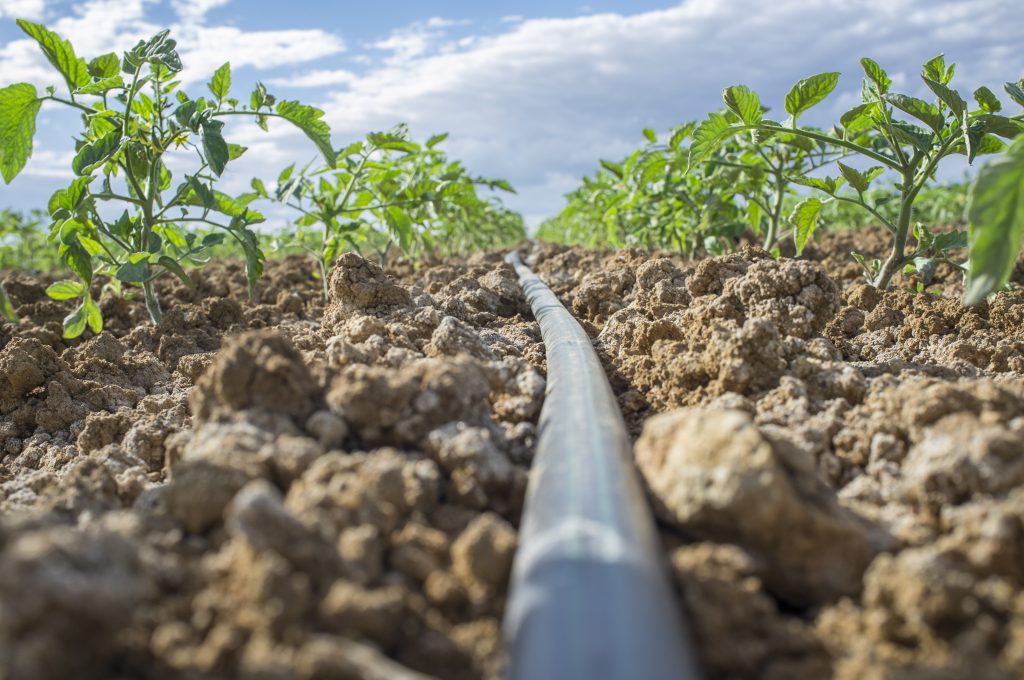
By Josh Paine for UGA CAES News
An online tool developed by the University of Georgia College of Agricultural and Environmental Sciences is helping produce growers assess their water quality and prepare for increased testing requirements.
Uttam Saha, a program coordinator at the UGA Agricultural and Environmental Services Labs, developed an online calculator and simulator to help educate farmers and Extension agents with necessary actions related to the water quality component of the Produce Safety Rule (PSR) in the Food Safety Modernization Act (FSMA).
The water quality subpart of the rule covers produce types that are frequently consumed raw to ensure growers use water that does not contribute pathogen contamination — like E. coli, norovirus or parasites — to produce so that it is ultimately safe for human consumption.
“The rule requires a lot of technical knowledge to understand the water-testing needs and to determine whether a farm is in compliance,” said Saha.
The PSR requires farms to establish a Microbial Water Quality Profile (MWQP) for each untreated water source used on the farm, as well as conduct annual microbial water quality surveys. This MWQP is based on the levels of generic E. coli measured in a water source over time, and testing frequency varies depending on the source of the water.
The program, available at aesl.ces.uga.edu/calculators/FSMA, also provides various model situations to train users.
“The biggest change for most farmers is the production (preharvest) water requirements, due in part to increased testing frequencies and the required calculations to determine water microbial quality,” said Laurel Dunn, an assistant professor of food science. “These calculations are not intuitive, so a tool was needed to assist farmers interpreting the results of their water tests.”
Dunn and her colleagues produced an instructional video on preharvest sample collection available at t.uga.edu/5Zj and another on postharvest sampling at t.uga.edu/5Zi.
Requirements for the smallest and final group of farms covered by the PSR began in January 2020. However, the water requirements don’t go into effect until January 2022 for large farms (more than $500,000 in average sales), January 2023 for small farms (between $250,000 to $500,000 in average sales), and January 2024 for very small farms (between $25,000 and $250,000 in average sales).
“Farms aren’t required to even begin taking water samples until 2022, but are strongly encouraged to do so, and many third-party audits require them to do it already,” said Dunn.
Fruits and vegetables grown for the fresh market are Georgia’s third-largest agricultural sector, with a combined farm gate value of more than $1.8 billion, according to UGA agricultural economists.
In addition to testing, at least one person on each farm covered by the PSR must have attended a Produce Safety Alliance Grower Training by the compliance date. The Georgia Department of Agriculture and UGA Department of Food Science and Technology have partnered to offer courses. Learn more about the trainings and more at agr.georgia.gov/produce-safety-program.aspx.
Georgia produce growers can contact their local UGA Cooperative Extension office for more information about testing frequency and requirements, for submitting water samples for testing by UGA Agricultural and Environmental Services Labs, and for interpretation by UGA experts including Saha and Dunn.
To learn more about UGA Extension food science programs, visit extension.uga.edu/programs-services/food-science.









